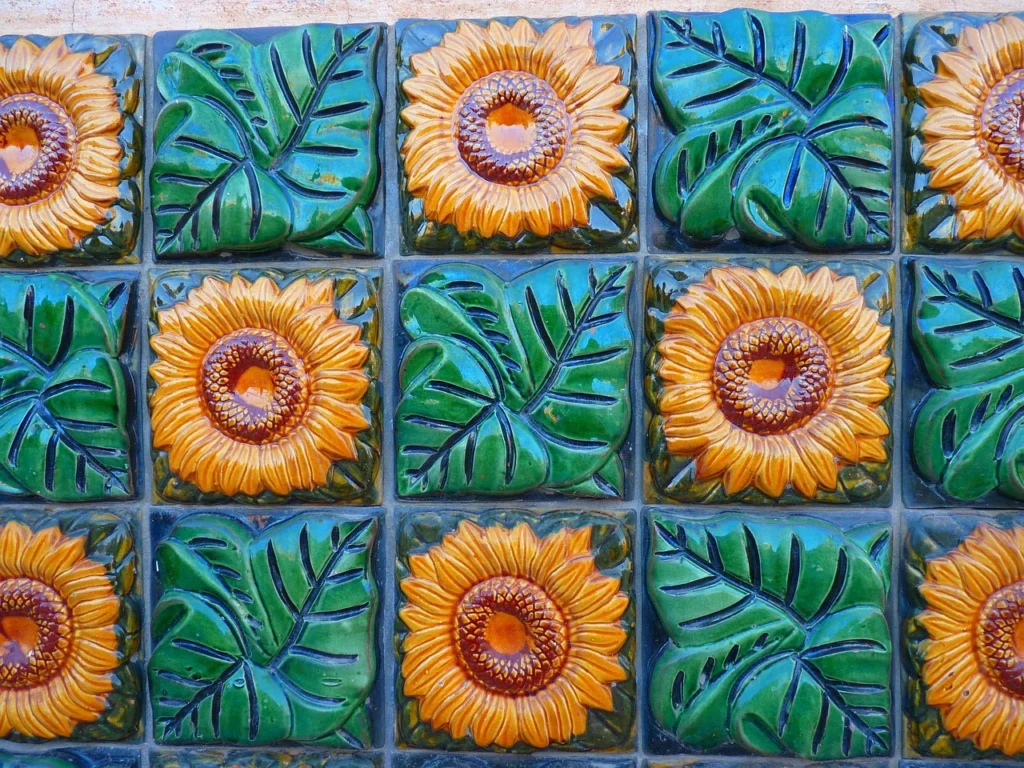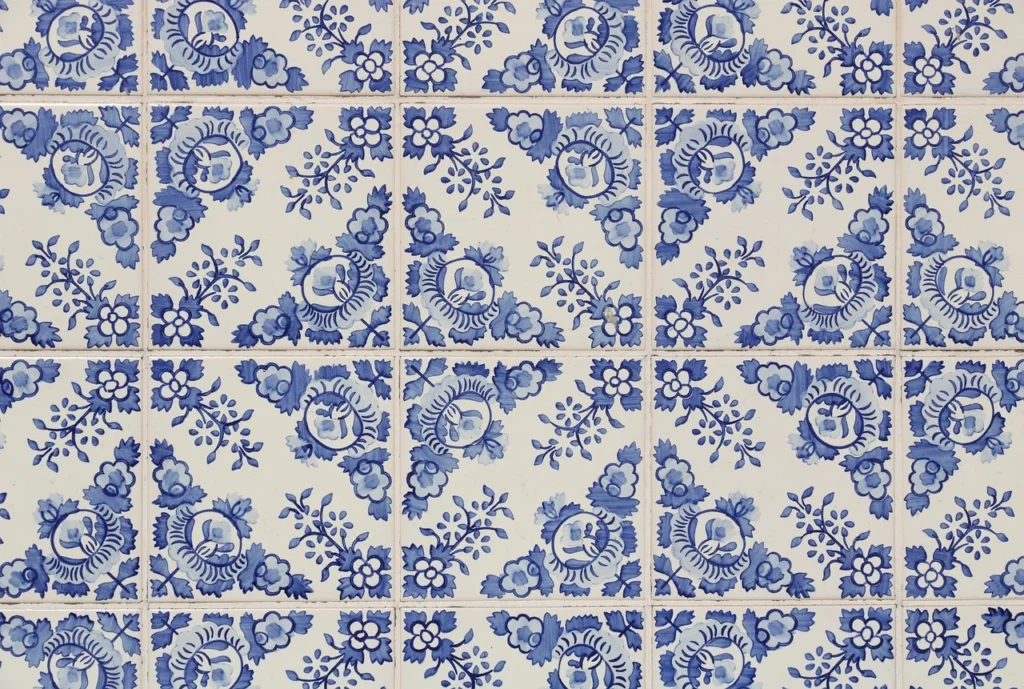Creating a stunning interior design using tiles is a bold way to showcase your style and add character to your home. Gone are the days of plain, uniform tile layouts—today, mixing and matching tiles is a trendy and versatile method for creating unique, personalized spaces. Whether you’re renovating a kitchen, bathroom, or living room, this guide will show you how to combine various tile styles to achieve a harmonious and eye-catching design.
Table of Contents
- Understanding the Basics of Mixing and Matching Tiles
- Creative Tile Design Ideas for Modern Interiors
- Tile Layout and Pattern Ideas for a Unique Interior
- Achieving a Cohesive Look with Different Tiles
- Unique Tile Combinations for Different Styles
- Final Thoughts: Mixing and Matching Tiles for a Truly Unique Interior
1. Understanding the Basics of Mixing and Matching Tiles
Before diving into design ideas, it’s essential to grasp a few fundamental principles of mixing and matching tiles. This ensures your final look is cohesive and not overly chaotic. Here are some core concepts to consider:

- Balance is Key: Combining different tile styles and patterns should create a balanced look. To achieve this, think about where to place bold, patterned tiles and where to keep things more minimal. Large spaces can handle more intricate designs, while smaller areas might benefit from simple, neutral tiles.
- Color Coordination: Choose tiles that share a common color palette to maintain harmony in the room. Even if the textures and patterns vary, a consistent color theme will tie everything together. For example, you might opt for different shades of the same hue or complementary colors for contrast.
- Texture and Finish: Mixing glossy and matte tiles is a fantastic way to add depth to a room. Smooth surfaces like glass or polished ceramic tiles reflect light, making a space feel brighter, while matte or textured tiles add warmth and interest.
2. Creative Tile Design Ideas for Modern Interiors
Now that you understand the basics, let’s explore specific tile design ideas for different areas of your home.
- Kitchen Backsplashes: The kitchen backsplash is a prime spot for mixing and matching tiles. Consider using subway tiles in a neutral color paired with a bold, patterned tile section behind the stove or sink area. This approach creates a focal point without overwhelming the space.
- Modern Tile Combinations: Mix classic white subway tiles with geometric or Moroccan-inspired tiles for a fresh, contemporary vibe.
- Unique Tile Patterns: Play with diagonal patterns or mix different sizes of tiles, like small mosaics with larger subway tiles, to add movement to the design.
- Bathroom Walls and Floors: Bathrooms offer great flexibility when it comes to experimenting with tile combinations. One popular trend is to mix patterned floor tiles with solid wall tiles or vice versa.
- Patterned Floors with Neutral Walls: If you choose an intricate tile for the floor, such as hexagonal or encaustic tiles, opt for neutral subway tiles on the walls for a balanced look.
- Accent Walls: Another great idea is to create an accent wall behind the sink or in the shower using decorative tiles while keeping the rest of the walls plain.
- Living Room Feature Walls: While tiles are most commonly used in kitchens and bathrooms, they can also make a striking impact in living rooms. A tile feature wall behind the TV or fireplace can add texture and dimension to your space.
- Geometric Tile Design: Create a modern aesthetic by using geometric tiles in varying sizes and colors. Combining hexagons, triangles, and squares in a unified color palette can make the room feel dynamic yet cohesive.
- Textured Tiles: Use 3D or textured tiles for a luxurious look. These tiles reflect light differently, adding visual interest without the need for loud patterns.
3. Tile Layout and Pattern Ideas for a Unique Interior
How you lay out your tiles can be just as important as the tiles themselves. Here are some innovative layout ideas that bring even more uniqueness to your design:
- Herringbone and Chevron Patterns: Both herringbone and chevron layouts are trendy tile patterns that can be used to create visual movement and sophistication in a room.
- Herringbone: Tiles are laid out in a zigzag pattern, creating a sense of fluidity. It works well for both floors and walls, especially in transitional areas like hallways or entryways.
- Chevron: Similar to herringbone but with a more precise alignment, chevron tiles form a continuous V-shape. This pattern is ideal for feature walls or backsplashes to draw the eye.
- Mixing Tile Sizes: Combining tiles of different sizes creates contrast and adds interest to a room. For example, using large square tiles on the floor and smaller mosaics on the walls can create a unique and appealing texture.
- Large Format with Small Accents: This works particularly well in bathrooms, where you might use large, plain tiles for most of the space and add small mosaic tiles as a border or detail around fixtures.
4. Achieving a Cohesive Look with Different Tiles
While mixing and matching tiles opens up numerous design possibilities, the key to a cohesive look lies in careful planning. Here’s how to ensure your mixed tile combinations are harmonious rather than overwhelming:
- Choose a Focal Point: Start by selecting one tile style to serve as the focal point of your design. This could be a bold, patterned tile or a unique texture. Then, choose complementary tiles that enhance, rather than compete with, the primary tile.
- Limit the Number of Styles: To avoid a cluttered look, limit the number of tile styles you mix. Two or three different tiles should suffice for most spaces. If you’re experimenting with more than one pattern, make sure to keep one tile in a solid color to balance the overall design.
- Use Transition Tiles: When combining different tile types, consider using transition tiles between sections. For instance, a thin strip of solid-colored tile can separate patterned tiles from plain ones, creating a smooth visual transition.
5. Unique Tile Combinations for Different Styles
Different tile combinations work better with specific interior design styles. Here are some suggestions based on popular design trends:
- Modern Minimalism: For a minimalist look, stick to a neutral color palette and focus on mixing textures rather than colors or patterns. Combine matte porcelain tiles with glossy ceramic tiles for a sleek, understated look.
- Bohemian Chic: A boho-chic interior calls for an eclectic mix of tiles. Think bold patterns, earthy colors, and natural materials like terracotta. Combine patterned tiles with hand-painted designs to create a warm and vibrant atmosphere.
- Industrial Style: Industrial interiors benefit from a mix of raw, rugged textures. Try pairing concrete-look tiles with dark, matte tiles or metallic finishes for a modern, urban vibe.

Combining Tiles with Other Materials
An often-overlooked way to elevate your design is by mixing tiles with other materials like wood, metal, or stone. This approach adds contrast and brings a sophisticated texture mix into your home.
- Tiles and Wood: Pairing cool ceramic or porcelain tiles with the warmth of wood creates a dynamic contrast. This is especially effective in spaces like the bathroom or kitchen, where natural wood cabinets or accents can soften the hard lines of tiled surfaces.
- Metallic Accents: Incorporating metallic tiles or accents (think brushed nickel, copper, or brass) can create a luxurious, modern feel. Metallic tiles are ideal for small areas like backsplashes, where a pop of shimmer can catch the light and bring a dynamic touch to your kitchen or bathroom.
- Stone Tiles: Natural stone like marble, slate, or travertine can add an organic, high-end appeal when mixed with more modern tiles. Try combining marble mosaic tiles with large-format porcelain tiles for a timeless yet fresh look.
Using Tile Borders and Insets for Visual Interest
Tile borders and insets are another design tool that adds flair to your tile arrangements. These design elements can subtly break up uniform tile layouts or highlight specific areas within a room.
- Tile Borders: Adding a decorative tile border can frame an area, like a backsplash or shower wall, to give it more definition. Choose borders in complementary colors or patterns to seamlessly integrate them into your design.
- Inset Tiles: Inset or accent tiles are smaller tiles placed strategically within a field of larger, simpler tiles. These are great for adding bursts of color, intricate patterns, or textures.
Incorporating Tiles into Non-Traditional Spaces
While tiles are commonly used in bathrooms and kitchens, they are increasingly being incorporated into unexpected areas of the home. Consider using tiles in places where you wouldn’t typically think to mix and match styles:
- Fireplace Surrounds: Create a stunning fireplace by mixing textured stone tiles with smooth porcelain or glass tiles. The contrast between materials adds depth, making your fireplace a focal point of the room.
- Hallway Floors: Hallways are often overlooked in design, but they can make a great canvas for creative tile combinations. Try using patterned tiles to create a “runner” effect, leading the way through your home.
- Outdoor Patios: Mixing different types of stone or ceramic tiles on patios and outdoor spaces can create a beautiful yet durable surface.
6. Final Thoughts: Mixing and Matching Tiles for a Truly Unique Interior
Mixing and matching tile styles is an exciting way to create a personalized interior design that reflects your unique taste. Whether you’re going for a modern, minimalist look or an eclectic, boho-chic vibe, combining different tile designs can add depth and interest to your space.
Remember to consider balance, color coordination, and texture as you plan your tile combinations. If done thoughtfully, mixed tiles can transform any room into a one-of-a-kind space that feels cohesive and stylish. For expert advice and high-quality tile options, feel free to contact us. We’re here to help bring your tile design ideas to life!



